Chord Formulas
Chord structures are represented by what we call “chord formulas”.
A chord formula is a combination of numbers, each number representing an intervallic relationship to the root of the chord, which is represented by the number 1.
The root of a chord is the note that gives the chord its name. It’s the note the chord is “built” on.
The root of a C chord is the note C, the root of an Abm chord is the note Ab, the root of an F#m chord is the note F#, etc.
The root is always numbered as 1.
If the next note in the chord is up a 3rd from 1, then that will get the number 3.
If the next note is up a 5th from 1, then that note gets the number 5.
As an example, the notes that make up a C chord are C E G
C = 1
E = 3 (C D E … 1 2 3 –> E is up a 3rd from C)
G = 5 (C D E F G … 1 2 3 4 5 –> G is up a 5th from C)
This blog deals with chord formulas ll built from a root, not with inversions.
Things get a bit trickier with inversions.
For example, when you see following:
E G C
The formula for this is not: 1 b3 b6
This 1 b3 b6 formula would imply that E is the root (1) and that this hence is some kind of E chord.
The problem with that is that this is not an E chord.
The notes C E G or any inversion of these 3 notes, always sounds like a C chord.
As such, the correct formula for the above would be 3 5 1 (E = the 3rd, G = the 5th and C = 1). This is a first inversion C chord, not an E chord.
How can you know?
It comes down to remembering (and then applying) a very important part of the study of harmony:
Chords are built stacking 3rd intervals!
Here’s how you apply this theoretical knowledge to figure out which chord the notes E G C add up to.
When I stack a 3rd up from “1st note” E, I get G (E F G). So far so good.
When I then stack another 3rd on top of G, I get B… not C. Conclusion: E G B are the notes that make up an E chord. Here we have E G C (a 3rd, E to G, and a 4th, G to C): This is not a C chord.
Maybe it could be a G chord.
Stacking a 3rd on top of G (because again: that is how you built chords), gives us the note B. Not a note in the above chord. Conclusion: this is not a G chord. (Stacking 3rd intervals on a G note gives us the notes G B D, which is what the notes are in a G chord)
There is only 1 possibility left: C
Stacking a 3rd on top of C gives us the note E (C D E… 1 2 3)
Stacking a 3rd up from E, gives us G. (E F G … 1 2 3)
C E G
Conclusion: the notes E G and C form a C chord. The notes are just out of order, which is what we call an inversion.
Put in ascending order starting from the root, we get C E G, and indeed: these notes are all 3rd intervals apart, which is how you built chords.
(On a side note: sus chords are built stacking 4th intervals.)
So as mentioned earlier: this blog doesn’t deal with inversions. That’s for a later blog.
The formulas of the inversions are much easier to understand and to figure out, once you have gotten all the upcoming chord formulas committed to memory.
This is the most thorough and in-depth chord formulas list available on the internet.
Have fun!
Power Chord
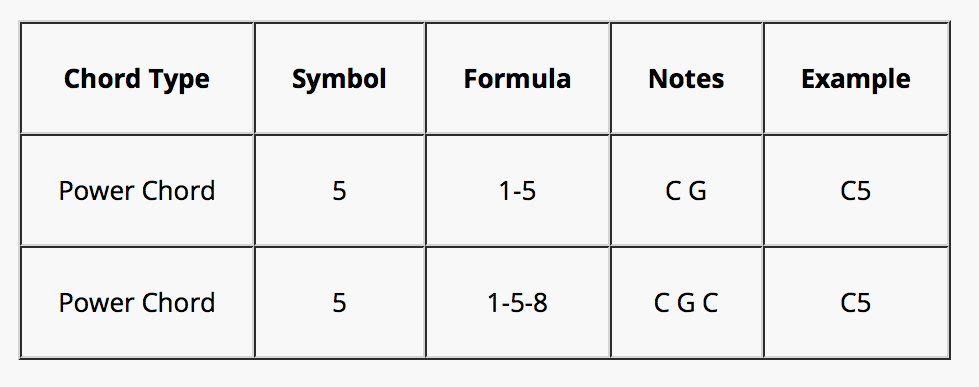
The Triads
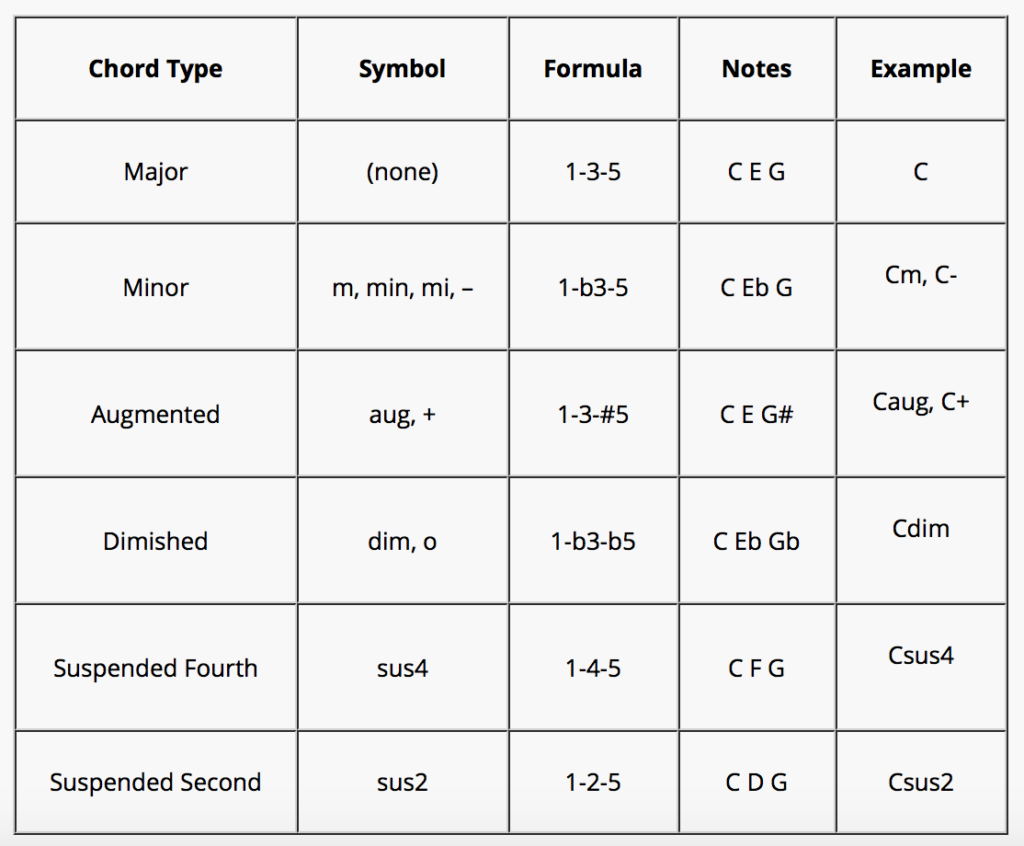
7th Chords (in the major scale)
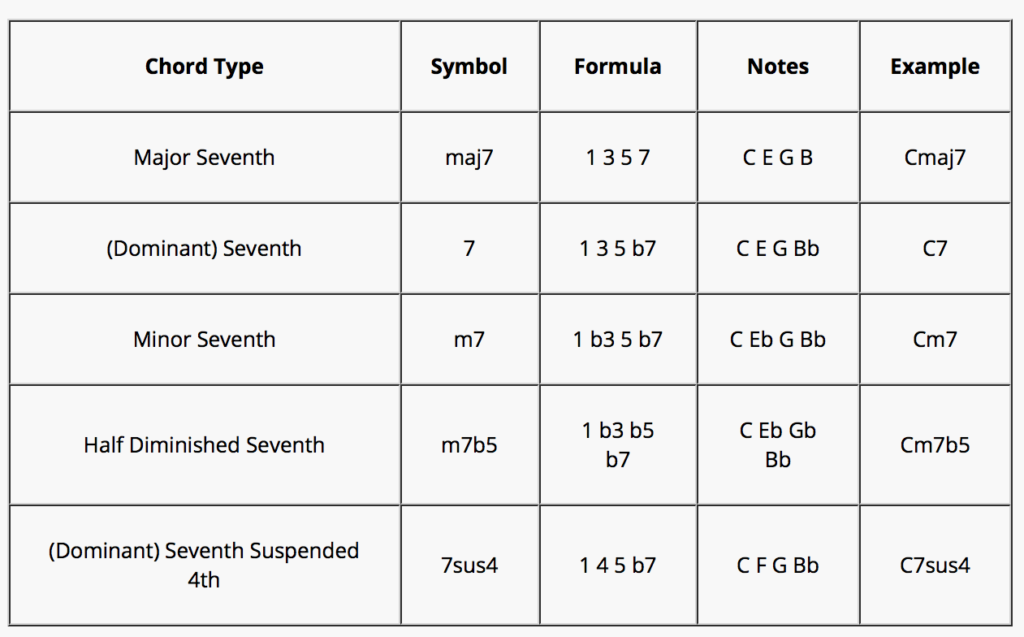
More 7th chords
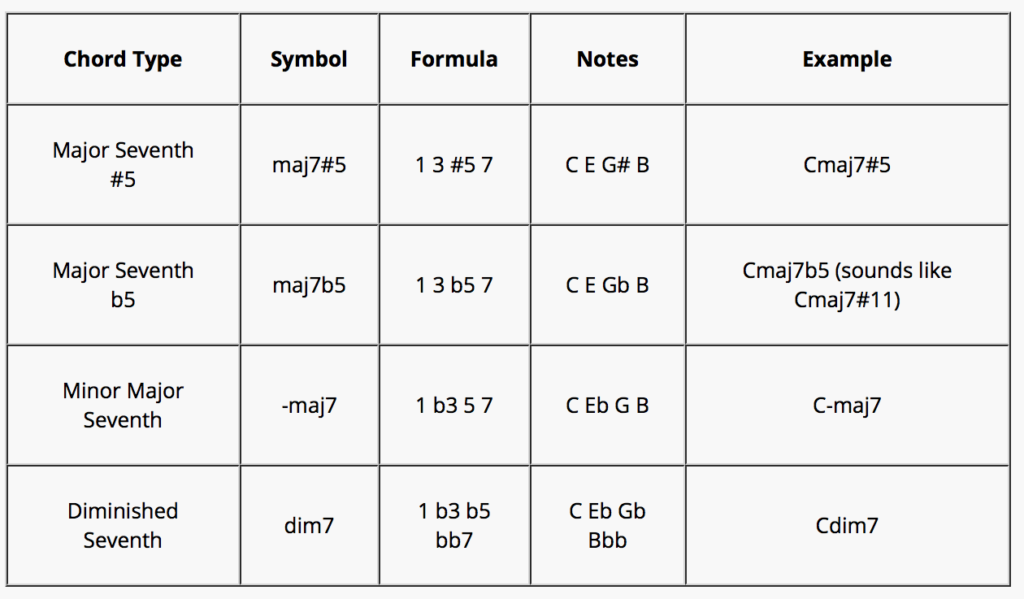
6th Chords
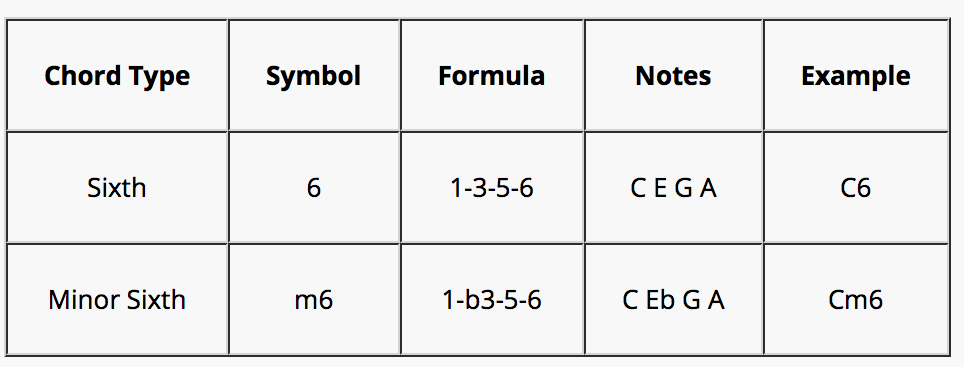
6th chords are always chords with a major 6th interval, never a minor 6th interval.
When you add a b6 to a 1 3 5 or 1 b3 5 triad, that b6 takes over and feels like the root.
This becomes clear when you add note names to the numbers of the formula, as shown in the following examples:
- 1 3 5 b6 = C E G Ab = 1st inversion of Ab C E G
This sounds like a 1st inversion Abmaj7#5 chord more than it sounds like a C chord - 1 b3 5 b6 = C Eb G Ab = 1st inversion of Ab C Eb G
This sounds like a 1st inversion Abmaj7 chord, more than it sounds like a C chord.
The “add” chords
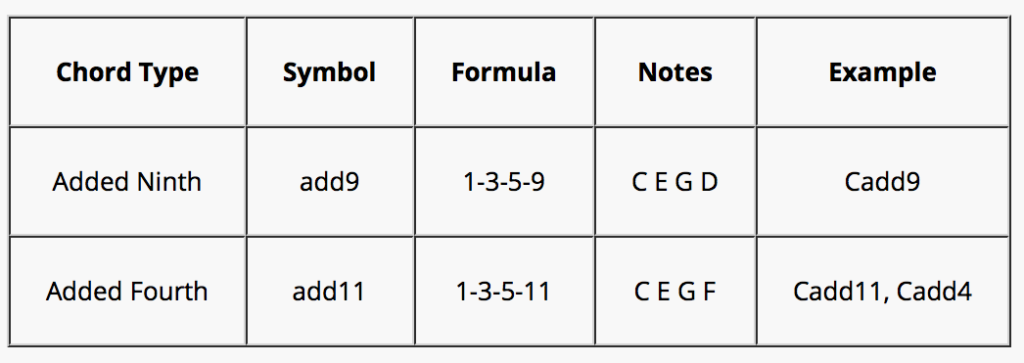
Add 11 is quite a clashy, nasty-sounding chord, with the E and the F note adding a lot of tension.
I added it here for thoroughness, but I don’t think I’ve ever encountered this chord in any song.
Chords With Tensions
maj7
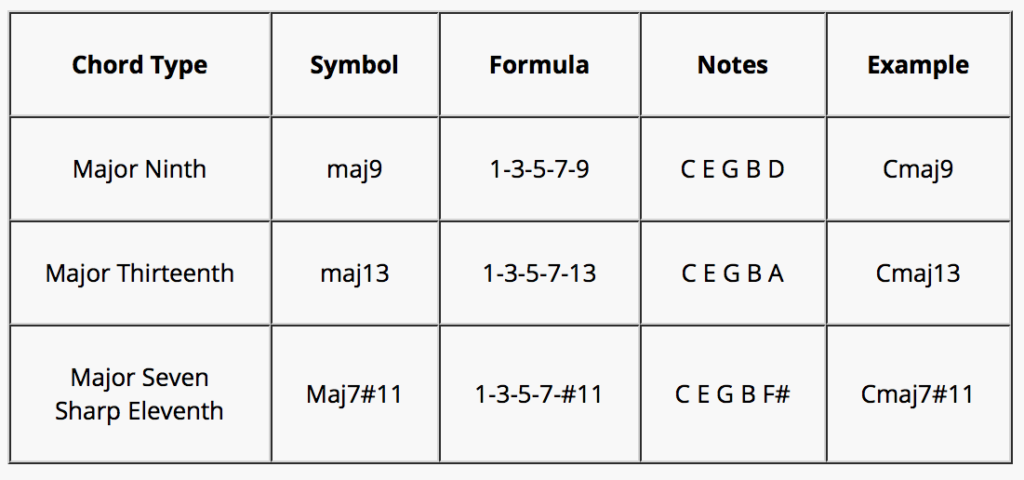
maj7#11 happens on the IV chord in a major scale. This chord has a Lydian sound.
maj7 with Tension Combinations
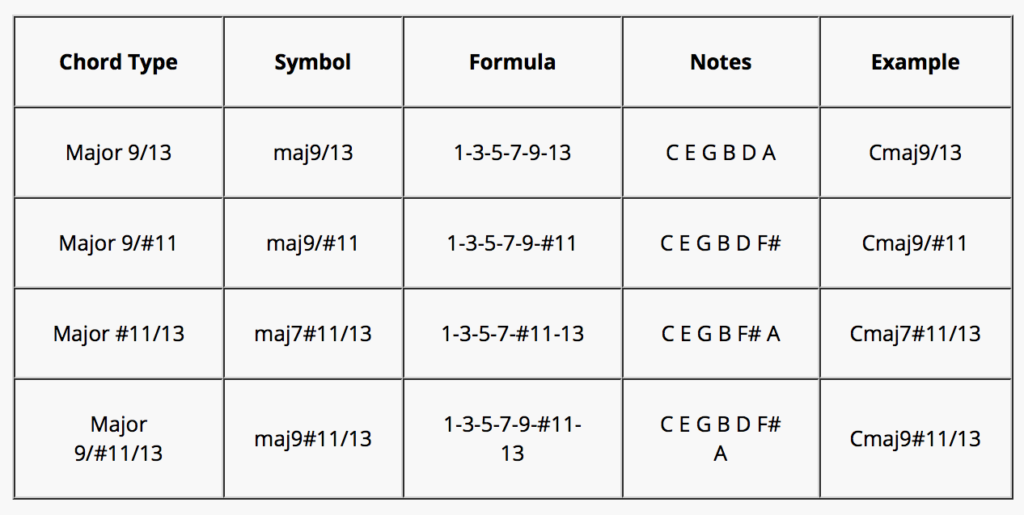
In chords with lots of tensions, you usually leave lesser important notes out, like the 5th or even the root.
m7
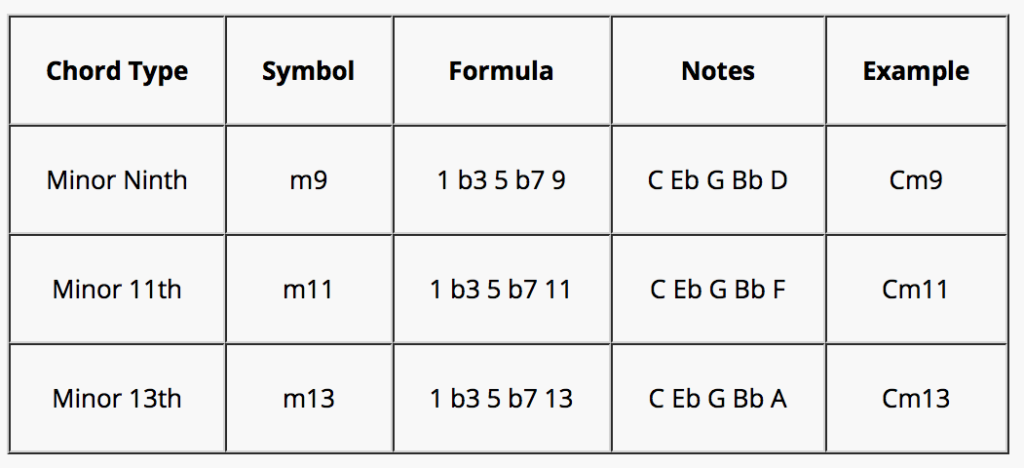
m7 Tension Combinations
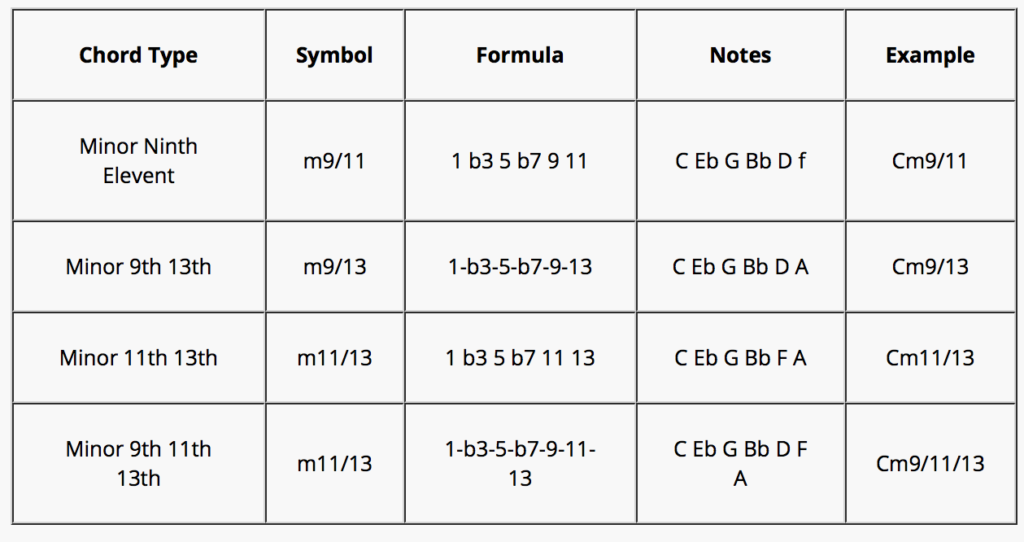
Dominant 7

Dominant chords (1 3 5 b7) with what you call altered tensions b5 #5 b9 #9, are called “altered chords”
The altered chord is chord I in the altered scale. The altered scale is the 7th mode of melodic minor.
What this means is that when you play a melodic minor scale starting on note number 7 of that scale, you are then playing an altered scale. The first chord in the altered scale is the altered chord.
m7b5
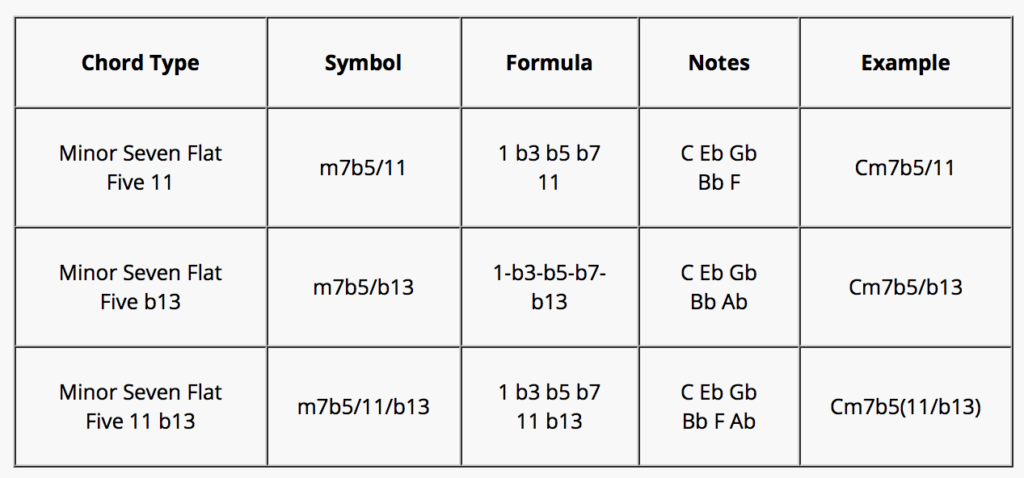
The “6/9” chords
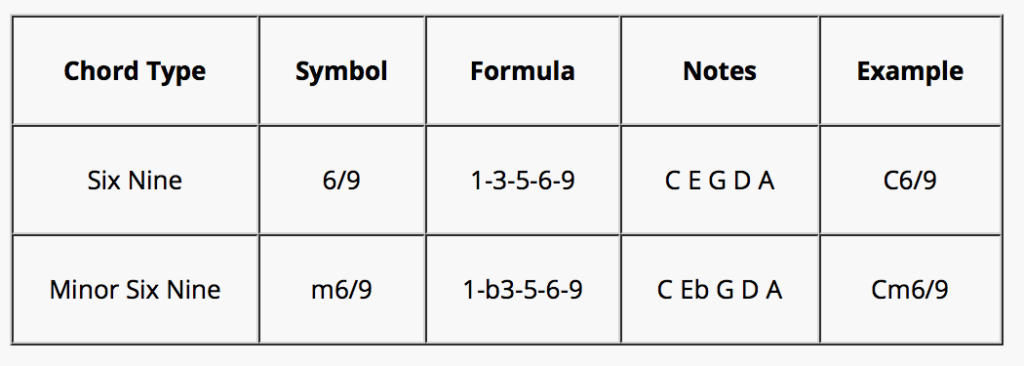
Conclusion
Hit me up anytime at vreny@zotzinmusic.com if you have any questions, or if you would like to book a lesson.
These free lessons are cool, but you will never experience the progress, joy, and results that my students experience in lessons when you’re learning by yourself from blogs and videos.
That is why people take lessons: way better results and progress, much more complete information, exposed to way more creative ideas than you can get from a blog or YouTube video.
There is only so much that self-study can accomplish.
If you want to see amazing results and progress in your guitar playing, buy your first lesson here and get started ASAP.
You’ll impress your friends and loved ones in no time with your guitar playing!
Consider donating any small amount to help me keep this blog going.
Thank you for your support!


